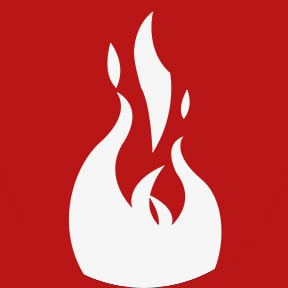
The Must-have Checklist on Efficient Maintenance Planning & Scheduling
OK, so I am an engineer. I fix what’s broken and have always felt a personal satisfaction in being instrumental in helping to keep things up and running. With more than 30 years of working in the maintenance and reliability industry, this is a good thing, right?
Sort of.
When I was starting out, I’ll admit, it felt great to not only fix things, but also to get that pat on the back for a job well done. It never occurred to me in those early days of “get a bigger hammer” that what I was doing was actually reactive… I didn’t even have a good sense of the meaning of ‘reactive’ in the maintenance world.
Now that I’m a little more seasoned, shall we say, I know there is a much better use of time and energy by properly maintaining equipment with improved planning and scheduling functions, as opposed to waiting until something breaks.
Improving efficiencies is vital to maintenance productivity
We now benefit from feature rich Enterprise Asset Management (EAM) systems and Computerized Maintenance Management Systems (CMMS). If we deploy these systems properly, tapping into modern technological advancements and keeping in line with best practices, the results are limitless. We can consistently improve efficiencies while also capturing quality data resulting in more meaningful reports at levels that were unachievable only a short time ago.
This is great news for any company that is in a reactive state. If your organization falls into this category, you’re probably fighting fires. You’re also likely swamped with a laundry list of repair activities that should be documented for use when similar work needs your attention in the future. Capturing these repair activities for assets in accurate, comprehensive job plans will increase efficiencies not only for planners, but also for technicians performing the work. This is where the increase in efficiency occurs.
In a modern day paradox, it’s unfortunate that many companies are still struggling to effectively develop and implement comprehensive planning and scheduling programs. Why? They are too busy fighting fires.
What is the cost to these organizations at the end of the day?
- Higher downtime
- Increased spare parts usage
- Increased overtime
- More rework...
Yes, the work gets done, but if they don’t have a plan for moving away from the reactive state of maintenance, those organizations will most likely remain in a reactive state and continue in a cycle of fighting fires.
Why does this happen? Because without proper planning and scheduling, maintenance organizations are not maximizing important time- and cost-saving components such as work quality, equipment/asset uptime, and maintenance productivity.
When these factors are not maximized, there are several results. First, there are hours upon hours of non-value time both during the actual job and between jobs. Also, it is costly to acquire and house spare parts unnecessarily—parts that take up valuable warehouse space and can essentially be ‘forgotten’ when the job is executed.
Astonishingly, it is estimated that as much as 10% of energy consumed is due to equipment that has not been maintained properly.
For organizations who fall into this area, it’s important to highlight necessary components for proper planning and scheduling. This is not an overnight process, but please, stick with it, even if you feel it is too time-consuming. In the long run, you’ll see the benefits of converting to this process. A good starting point is focusing on the highest priority assets and then progressing to lower priority ones as time allows.
The essential components for planning and scheduling efficiency
First, take a good, critical look at the work management processes (specifically planning and scheduling) your organization has in place. Are they documented? Have they been reviewed and improved?
Ask yourself if your planning and scheduling processes include the following components:
- Who is the one to verify the job scope?
- What does this job entail (Include crafts, materials, tools, etc.)?
- Are there specific resources that are required or should be identified?
- What is the specific job plan (Including a list of steps laid out)?
- Have you identified all safety issues, including all lock-out and tag-out incidences?
- Is there any necessary technical documentation included in your process?
- Who is included in the process (include craftspeople, etc.)?
- Is there a list of the labor hours by skill?
- Are there any permits required to complete the task? How many? Are they available?
- What are the physical and environmental constraints?
- Are there any approvals necessary?
- How are operations impacted?
- How are customers impacted?
- Do you have a formal documented list?
It’s important to note that not all organizations will have the same components; however, it’s important to consider all of these components.
Tips to find the CMMS/EAM that's right for your maintenance planning and scheduling
Once you have your answers to the questions in the checklist, you may need to make some technology choices to steamline your processes. When considering planning and scheduling applications, keep in mind that some are going to be better than others.
Nearly every EAM/CMMS package you find today has fields to support the required data elements for planning and scheduling, and these can be used in many different ways and by different approaches. It is important to look for an application that is visual-based and supports ‘what if’ scenarios.
EAM and CMMS systems are excellent for capturing data related to work execution, but it is not always an easy task to easily see the work that needs to be accomplished today or to build a plan for next week or for the upcoming shutdown.
Reading the data from the EAM into an offline application has the best potential for success since the “what if” scenarios do not impact the performance of the EAM. It is also a simpler task to perform planning activities against multiple work orders.
Some key things to look for are:
- Enhanced drag and drop rescheduling features, not only one work order at a time, but an entire schedule.
- One click filtering of work to a specific craft, day or week.
- One click to assign a resource to a work order or tasks with in a work order and better yet, the ability to assign a craft or a resource to multiple work orders or tasks in an efficient manner.
- Finally, the application needs to be flexible so that you don’t need to change your current processes if they work for you. Most planning and scheduling applications make you conform to their process and sometimes that just doesn’t work.
That being said, all applications are designed to improve the planning and scheduling function. Although many utilize a more visual and user friendly approach, they must also be intuitive to use. If the application is not easy to use, work arounds will be the order of the day.
Each organization is different and it’s important to decide which applications best suit your needs. There is not one perfect match for every situation; however, all the principles listed above apply in general.
Moving from reactive to proactive maintenance
You are the best decision maker for your company. It is up to you to determine which general principles best apply to your needs. Understand what is the best match for your organization and from there, plan on those critical, continuous improvement cycles.
As I learned the hard way, moving from a reactive state isn’t quick or necessarily easy. However, the way has been paved and there is plenty of support material to help you in the transition. For example, I invite you to take a look at our white paper to learn more about planning and scheduling best practices.
Free White Paper - Planning & Scheduling Best Practices
And if you would like to learn about Prometheus Routine Maintenacne, a proven planning and scheduling application for IBM Maximo, we’d be more than happy to schedule a demo.
Soon, your organization will be fully functioning in a more proactive state with efficient planning and scheduling methods. There will always be fires to put out but by maximizing your maintenance processes, you’ll find those fires will be less frequent and much easier to control.

